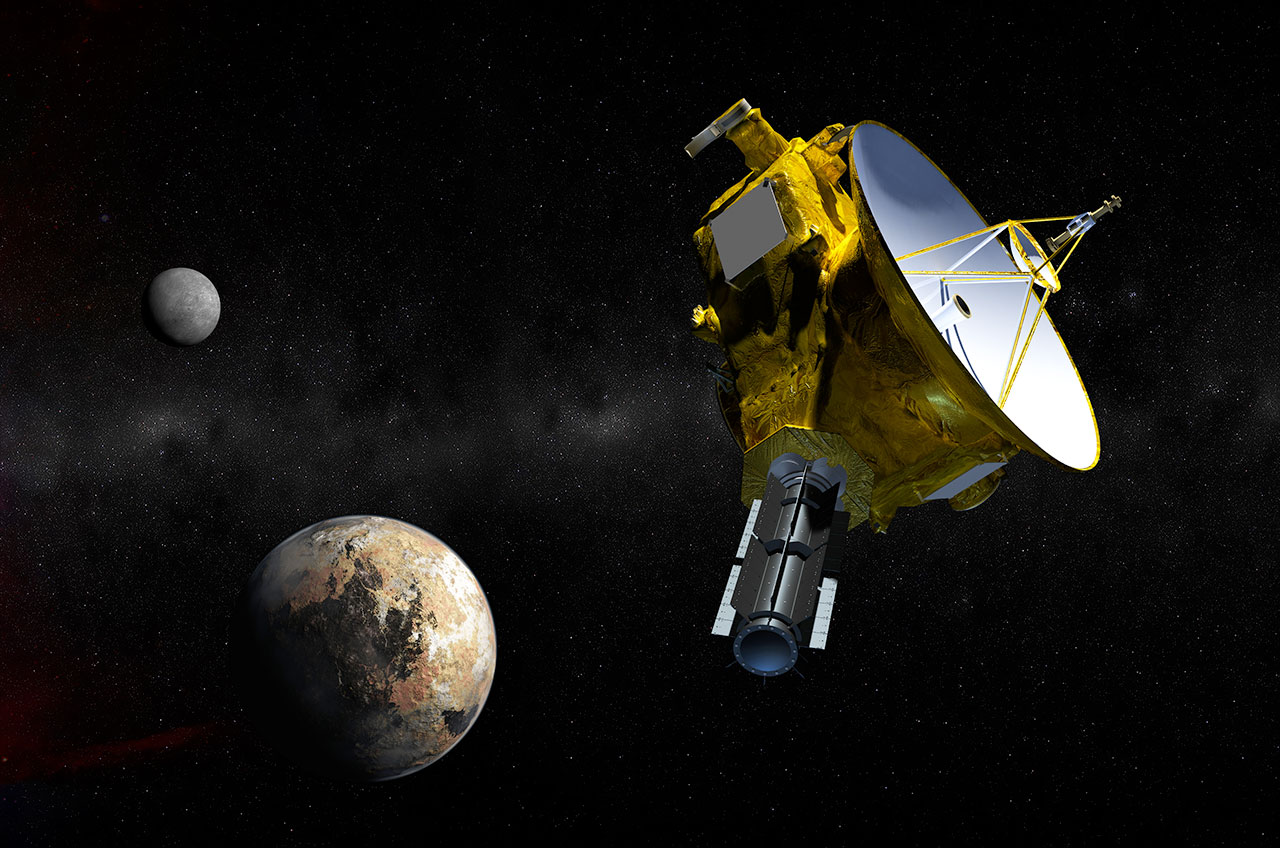
NASA's New Horizons spacecraft has completed its highly anticipated close flyby of Pluto, but the probe's work at the outer reaches of the solar system is far from done.
New Horizons zoomed within 7,800 miles (12,500 kilometers) of Pluto's surface on July 14, capturing the first up-close images of the dwarf planet and its moons. Though the spacecraft is now speeding away from Pluto into the depths of the frigid and faraway Kuiper Belt, it's still gathering data and beaming information home to Earth.
"We're now in the first of our 'departure science' [command] loads," New Horizons principal investigator Alan Stern, of the Southwest Research Institute in Boulder, Colorado, said during a press briefing Friday (July 17). [New Horizons' Pluto Flyby: Complete Coverage]
"So we're looking back at the planet in that special geometry, looking at the night side and doing various experiments, and splitting our time downlinking data," Stern added.
New Horizons will operate in three separate "departure phases" that last until January 2016, when the mission's Pluto encounter officially ends. But data delivery to Earth will continue far beyond that date, because downlink rates are so slow — about 2 kilobits per second — and the probe has gathered so much information about the dwarf planet system. (New Horizons must also share the use of NASA's Deep Space Network of data-receiving antennas with other missions.)
New Horizons collected about 50 gigabits of data during its nine-day-long "close-approach" phase of operations, which ended Thursday (July 16). As of Friday, less than 2 percent of that information had come down to the ground, Stern said.
New Horizons is initially sending home compressed versions of its data files, to get them back to Earth relatively quickly. A concerted effort to get all the flyby data down in compressed form will begin in September and should take 10 to 12 weeks, Stern said.
Get the Space.com Newsletter
Breaking space news, the latest updates on rocket launches, skywatching events and more!
The complete dataset of uncompressed files, meanwhile, should be on the ground by late 2016, NASA officials have said.
But that milestone may not mark the end of New Horizons' work, either. Stern and the rest of the team would like to send the spacecraft on to study another Kuiper Belt object (KBO) up close during an extended mission, and they've already identified two potential targets for this second flyby, which would likely occur in early 2019.
Both bodies — named 2014 MU69 and 2014 PN70 — lie about 1 billion miles (1.6 billion km) beyond Pluto, which is nearly 3 billion miles (4.8 billion km) from Earth at the moment. 2014 MU69 and 2014 MT70 are both several dozen miles wide, so they're very different objects than Pluto, which New Horizons revealed to be 1,473 miles (2,370 km) in diameter.
A decision on which body to fly by will be made soon; minimizing the fuel needed to get to New Horizons' next target requires firing up the engines by this fall, mission team members have said. That engine burn will therefore probably be performed before NASA officially approves and funds the potential extended mission.
"The proposal to explore additional KBOs will be due in 2016; it will be evaluated by an independent team of experts to gauge its merit: the team will evaluate the health of the spacecraft and its instrument payload, the value of the science New Horizons can do at a KBO, the cost of the flight to and the exploration of the target KBO, and more," New Horizons team members wrote in a description of the mission's timeline.
"If it recommends funding and NASA approves, the New Horizons Extended Mission would begin in 2017, allowing the team to plan and test the encounter (which would take place one-two years later) and to continue to operate New Horizons," they added.
Follow Mike Wall on Twitter @michaeldwall and Google+. Follow us @Spacedotcom, Facebook or Google+. Originally published on Space.com.
Join our Space Forums to keep talking space on the latest missions, night sky and more! And if you have a news tip, correction or comment, let us know at: community@space.com.

Michael Wall is a Senior Space Writer with Space.com and joined the team in 2010. He primarily covers exoplanets, spaceflight and military space, but has been known to dabble in the space art beat. His book about the search for alien life, "Out There," was published on Nov. 13, 2018. Before becoming a science writer, Michael worked as a herpetologist and wildlife biologist. He has a Ph.D. in evolutionary biology from the University of Sydney, Australia, a bachelor's degree from the University of Arizona, and a graduate certificate in science writing from the University of California, Santa Cruz. To find out what his latest project is, you can follow Michael on Twitter.









